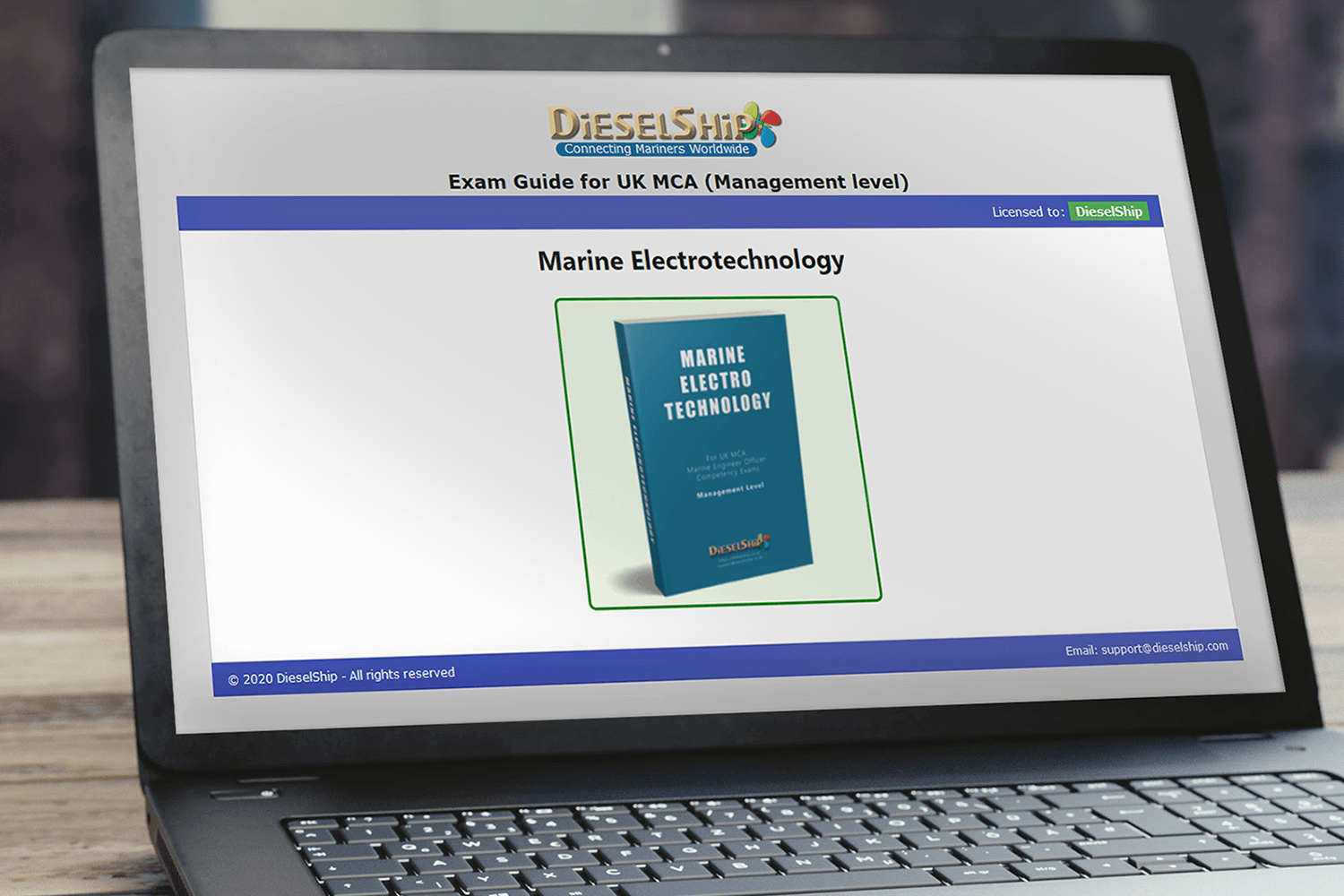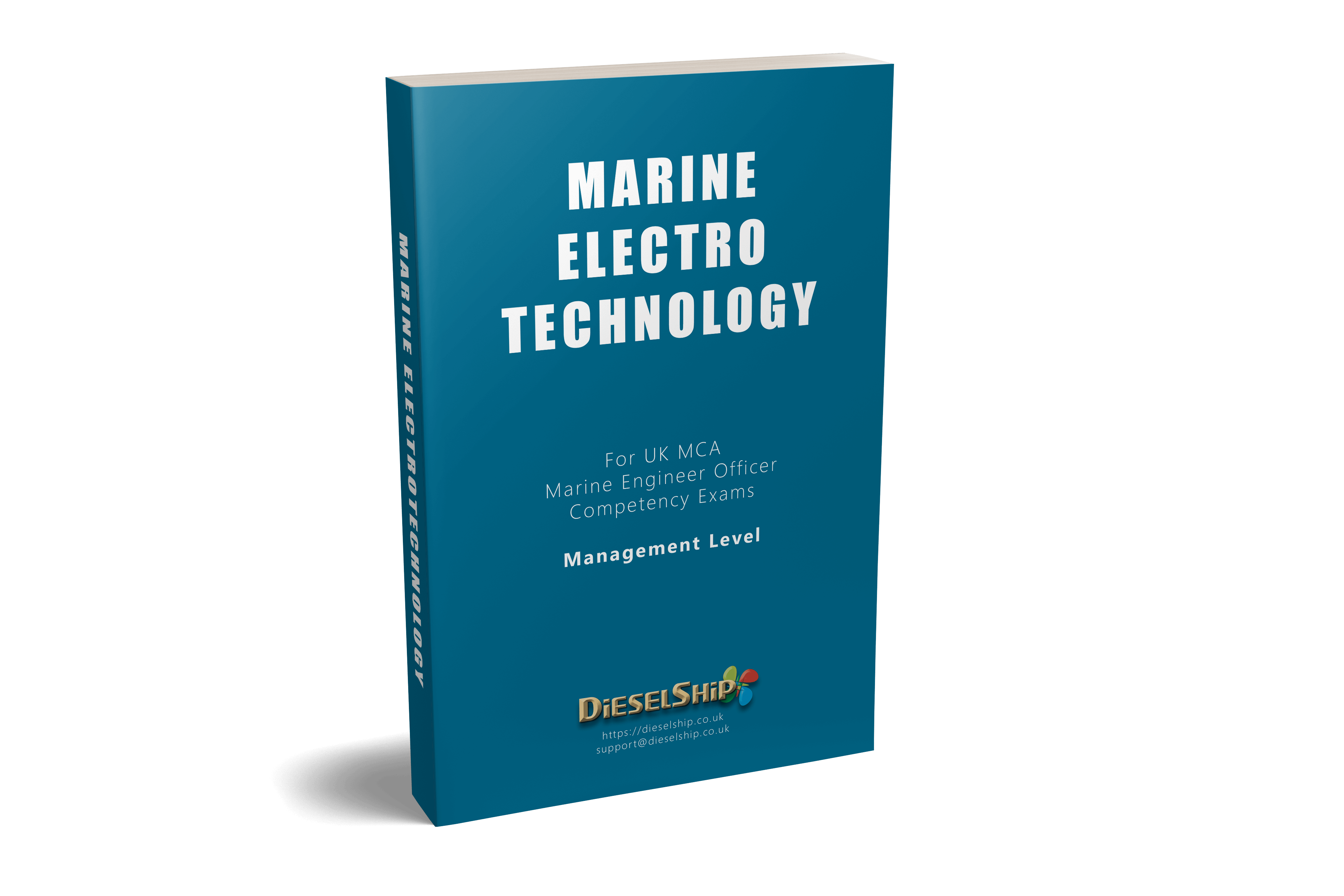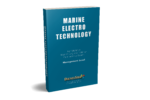E-Book : MARINE ELECTROTECHNOLOGY – UK MCA MANAGEMENT LEVEL
SOLVED ANSWERS FOR PAST EXAM QUESTIONS OF ELECTRO-TECHNOLOGY -UK MCA MANAGEMENT LEVEL EXAM GUIDE
- ELECTRO-TECHNOLOGY -UK MCA MANAGEMENT LEVEL EXAM GUIDE
- Solved answers for past exam question papers (Year 2010 – December 2017)
- Clear & legible contents freshly typed & Laser printed
- Solutions arranged chronologically starting from the most recent exam.
- Full set of all 6 academic subjects are available here – UK MCA Management level exam guide – Full set
Please Note:
- E-Books run only on systems with Windows 7 Home edition and above.
Windows 7 Starter and Home Basic editions are not supported. - Android, iOS, Mac and Linux devices are not supported yet.
- The E-Books are locked to one computer use only.
- Support for the software is limited to 24 months from the date of purchase
- No computer (System ID) change is permitted once the E-Book activation code is provided.
SOLVED ANSWERS FOR PAST EXAM QUESTIONS OF ELECTRO-TECHNOLOGY -UK MCA MANAGEMENT LEVEL EXAM GUIDE
- ELECTRO-TECHNOLOGY -UK MCA MANAGEMENT LEVEL EXAM GUIDE
- Solved answers for past exam question papers (Year 2010 – 2017)
- Clear & legible contents freshly typed & Laser printed
- Solutions arranged chronologically starting from the most recent exam.
- Full set of all 6 academic subjects are available here – UK MCA Management level exam guide – Full set
ELECTRO-TECHNOLOGY -UK MCA MANAGEMENT LEVEL EXAM GUIDE
III/2 –Electro Technology
- Resistive Direct Current (DC) Circuits.
- DC Transient Circuits.
- Construction and operation of 3 Phase Synchronous Alternating Current (AC) Generators.
- Balanced and unbalanced 3 Phase AC Circuits.
- Construction and operation of 3 Phase AC Motors.
- Construction and operation of AC Transformers.
- AC distribution load sharing.
- Use of electronics in marine applications.
syllabus
III/2 –Electro Technology
The candidate will know:
Resistive Direct Current (DC) Circuits.
DC Transient Circuits.
Construction and operation of 3 Phase Synchronous Alternating Current (AC) Generators.
Balanced and unbalanced 3 Phase AC Circuits.
Construction and operation of 3 Phase AC Motors.
Construction and operation of AC Transformers.
AC distribution load sharing.
Use of electronics in marine applications.
The candidate will be able to:
Resistive Direct Current (DC) Circuits.
Solve problems using Ohm’s and Kirchhoff’s laws involving a maximum of two unknowns for the following:
Radial feeders
Ring mains
Double-fed systems using dissimilar voltages
DC Transient Circuits
Solve problems in relation to growth and decay of electrical quantities of series connected RC circuits during charging and discharging.
Solve problems in relation to growth and decay of electrical quantities of series connected RL circuits during switch on and/or switch off using a steady DC supply.
Construction and operation of 3 Phase Synchronous Alternating Current (AC)
Generators:
Sketch the waveform diagram of three phase voltages.
Apply the relationship between frequency, number of poles and speed.
Describe the constructional details of the following: Stator, rotor (cylindrical and salient),
methods of excitation, terminal box and cooling arrangements.
Calculate the EMF value of a generator.
Explain the need for Automatic Voltage Regulation describing the different methods ofexcitation
Determine the terminal voltage for varying loads and power factors.
Explain generator protection required for single and parallel operation.
Explain insulated and earth neutral systems.
Balanced and unbalanced 3 Phase AC Circuits:
Solve problems for balanced star and/or delta connected three phase AC loads comprising
RLC elements in relation to: Phase voltages and line voltages, Phase currents and line currents, Power factor and Power factor correction.
Sketch 3 phase voltage and current diagrams.
Solve problems on unbalanced three phase AC loads in relation to the magnitude and angular orientation of the neutral conductor current.
Construction and operation of 3 Phase AC Motors:
Describe the construction of the different types of 3 phase AC motor.
Explain the operating principles of 3 phase AC motors, including torque/slip curves.
Solve problems on: Slip, Frequency of rotor EMF, Synchronous speed, Rotor speed, Stator
losses, Rotor copper losses, Output and input power, Motor torque, Motor current and Efficiency.
Describe starting and speed control methods of a 3 phase AC motor.
Solve problems relating to synchronous motors being used for power factor correction.
Construction and operation of AC Transformers:
Explain the principles of operation of single phase transformer.
Describe the construction of single phase transformer.
Solve problems on the application of transformer EMF equation, ratios of transformers, and VA ratings of transformers.
Sketch and explain ideal and practical transformer phasor diagrams.
Solve problems involving transformer phasor diagrams.
Solve problems involving transformer losses and efficiency.
Explain, and identify applications of, 3 phase transformer connections (star/delta, star/star,
delta/delta, and delta/star) and standard identification of connections.
Describe the principle of operation of an auto transformer including applications and circuit diagrams.
Solve problems on auto transformers, involving voltages, turns ratio, and tapping points.
Describe the function of instrument transformers including applications and circuit diagrams.
AC distribution load sharing:
Solve problems relating to: active power, reactive power, apparent power, power factor, power factor correction.
Use of electronics in marine applications:
Explain the operation of a p-n junction diode in forward and reverse bias conditions, including characteristic curves.
Sketch and describe the circuit diagram and input and output waveforms for full-wave and half-wave rectifiers, including smoothing.
Determine mean dc rectified voltage for half and full wave single phase circuits given ac input supply and vice versa.
Explain the operation of pnp and npn bi-polar transistors in common base, common emitter and common collector connections.
Sketch the circuit diagram for a bipolar transistor used as a switch and explain its action, with reference to marine applications.
Sketch the circuit diagram for a bipolar transistor small signal amplifier and explain its action, with reference to marine applications.
Calculate the current flow in a transistor switching circuit used for control or alarm purposes.
Explain the photo-electric effect and its application to photo-diodes and identify a use of the photo-diode in a marine application.
Describe the construction, characteristics and operation of a thyristor, including bias voltage
polarities necessary for “turn-on”, necessary conditions for “turn-off” and identify applications.
Sketch a thyristor circuit using variable phase shift control, showing typical load current and voltage.
Describe the construction, characteristics, operation and application of a zener diode
Sketch a basic dc stabiliser circuit and calculate values of: voltage, current and power, under change of load and supply voltage.















